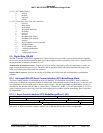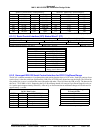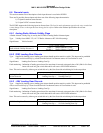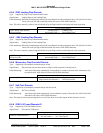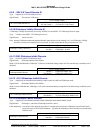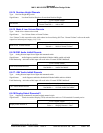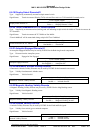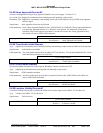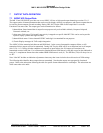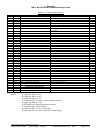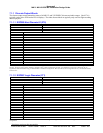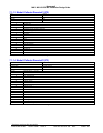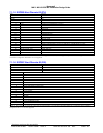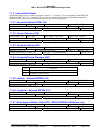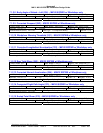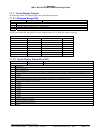
Honeywell
MK VI MK VIII EGPWS Installation Design Guide
Proprietary notice on title page applies
CAGE CODE: 97896 SCALE: NONE SIZE: A DWG NO: 060-4314-150 REV:
SHEET 303
7 OUTPUT DATA DEFINITION
7.1 ARINC 429 Output Data
The MK VI and VIII EGPWC provides one or two ARINC 429 low or high-speed output channels per section 5.3.6.3.
The output consist of internal parameters that can be used for display selection, test purposes, and discrete outputs that can
be used for discrete outputs, test and recording. During LRU Self-Test the SSM of each output label is set to the
Functional Test status code. The output types can be summarized as follows.
1) Internal data: Some internal data is output for test purposes only such as Radio Altitude, Computed Airspeed,
Geometric Altitude, etc.
2) Alert status: Each type of Voice and Lamp activity is mapped to a specific label/BIT. This can be used to provide
inputs to display systems and flight recorders.
3) Internal Mode status: Various internal EGPWC mode logic is transmitted for test purposes.
4) Terrain Display messages for TAD cockpit integration.
The ARINC 429 bus transmits both discrete and BNR labels. In the event of catastrophic computer failure, or 429
transmitter failure, outputs will not be transmitted. During Self-Test, the SSM will be set to functional test on all outputs
(bits 31/30 = 1/0). During all other conditions of computer or input failures, the 429 outputs will continue to be
transmitted as actual valid data. For valid status the standard discrete SSM format is used (00) except for data indicated as
being in 2’s complement format where the standard BNR SSM format is used (11). The SDI bits (9/10) will always be set
to “00”.
Note: Label 067 includes an indication of parameter inaccuracy that is not tied to the above discussion of SSM settings.
The following table identifies those outputs that are transmitted. Note that the outputs are segregated by functional
groups. Refer to the subsections following the table for specific format information for each output. The subsections are
in the same order as the table.



